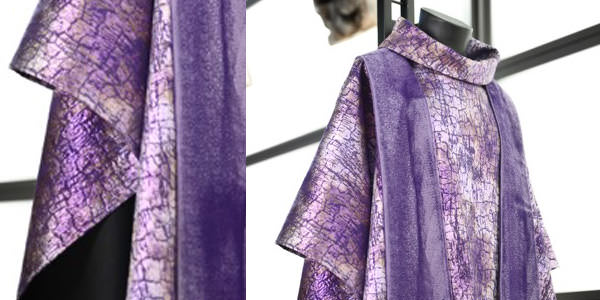The gown makes the friar
Schmid’s fabrics have no boundaries and not only the most famous fashion brands use them. An unexpected collaboration emerges from a charity project

Milan-based Manifatture Mario Bianchetti is one of those cases of Italian excellence scarcely known by the general public. But, for over 100 years, it has been manufacturing ecclesiastic gowns and vestments appreciated and recognised worldwide and featuring in images published by international media such The New York Times and the BBC. To testify this success is the collaboration started in 2005 between Elisabetta Bianchetti, designer and chief executive of the company, and the designer Calvin Klein, that led to the creation of frocks for the friars of the ancient abbey of Sept Fons in France.
Schmid’s velvet at Vicenza’s Koinè
During its history, the Milanese company has won many awards. The most recent one was obtained at the Koinè trade show in Vicenza, Italy, that gave it a prize for a chasuble, the outermost liturgical vestment, made with a Schmid fabric. To tell us the story is Elisabetta Bianchetti, who explained that “after having seen it during a non profit charity auction organised by Schmid with some of its fabrics, I thought that Schmid’s velvet could be the ideal product to carry out an idea I had in mind. I wanted an elegant fabric, classical but that could also be modern. Indeed, the chasuble had to adapt to particular architectural settings, such as modern glass churches.”
The company’s comment
Schmid is also satisfied with the result. The comment made by the chairman and CEO Paolo Ciccarelli proves it. “I have always said that our work is to make fabrics and materials that can foster the creativity of stylists and designers. Nowadays, the traditional boundaries between sectors once far apart are now superceded. What we see every day on our tablets is a blatant demonstation of that and the collaboration with Elisabetta Bianchetti is the latest evidence. In 2015, we provided to Estel some of our products for the realisation of interior design prototypes that obtained a great success. Some young designers have made a name for themselves and are catching the attention of the general public with products ‘Made in Schmid’. This is our path, and we are ready to continue walking down it.”
